Why We Tried CBD Oil
Even though the endocannabinoid system was discovered over 20 years ago, we are just starting to learn more about it and how it relates to gut health. Before we get into the science, let me share an incredible story and why I decided to start using CBD hemp oil with IBS clients in my private practice.
My teenage son was injured playing hockey and suffered from a terrible concussion. About 6 months following the injury, his digestive symptoms developed including poor appetite, weight loss, vomiting almost every morning, and alternating diarrhea and constipation. After having an endoscopy and colonoscopy done, he had so much inflammation and damage in his esophagus and stomach the doctor insisted we use medication to heal the gut.
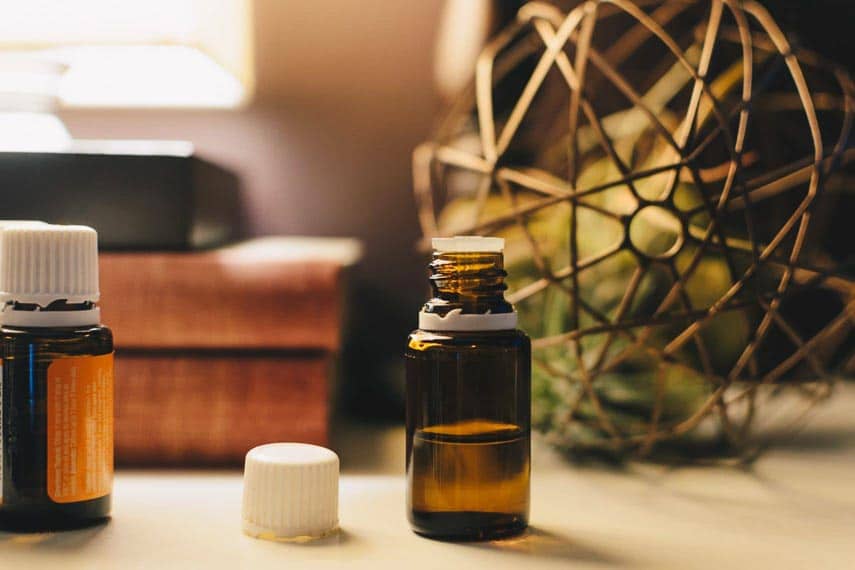
He made very little progress, but the medication helped him tolerate the symptoms better and took the “edge” off. About 6 months ago, my son approached me with questions about using CBD oil since he had read about it online.
Since I am an integrative dietitian and like to look “outside the box”, I decided to dive into the science and evaluate the current research to see if this was something worth using. I found enough evidence to know this was a safe therapy to use in conjunction with the medical treatment, so we gave it a go.
- Why We Tried CBD Oil
- CBD Hemp Oil – Not Medical Marijuana
- Symptom Free Within Weeks
- My Turn To Try It On My IBS Symptoms
- Professional Training & Certification
- What About The Science Behind All of This?
- How Does The ECS Impact The Gut?
- The Takeaway
- General CBD Dosing Guidelines
- Cooking with CBD
- Where to Buy Quality CBD Oil
CBD Hemp Oil – Not Medical Marijuana
When I first mention “CBD” to people, I often get a funny look. To clear up the confusion, I am referring to CBD hemp oil, which is derived from industrial hemp plants that are high in CBD and contain only a trace amount of THC. Through the extraction process of making CBD hemp oil, products may have all of the THC removed or may contain a small amount up to 0.03%. THC is the psychoactive compound found in marijuana that gives people that “high” feeling. Personally, I only use CBD hemp oil products that are completely THC free.
CBD hemp oil comes in a variety of forms. My son started by using an oil tincture under the tongue. There are also gel capsules and pain creams that can be used topically. As you can see, this is not the same type of therapy as someone using medical marijuana and doesn’t require any type of medical card. In fact, you can buy CBD hemp oil at many pharmacies, health food stores, and from healthcare practitioners.
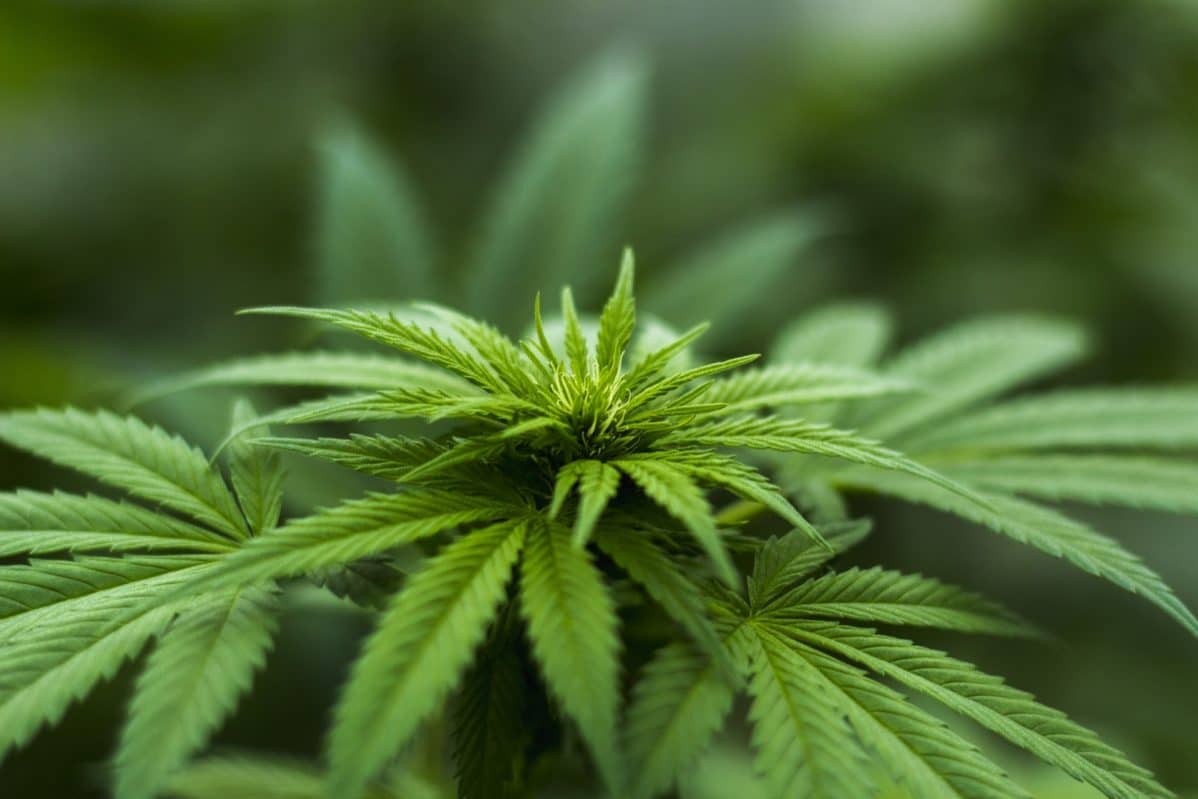
Symptom Free Within Weeks
Within a couple of weeks, I noticed my son’s appetite start to surge and he wasn’t vomiting anymore. He continued to eat and eat until he regained the 20 pounds he had lost. His stomach pains decreased and he slowly transitioned back into the kid he was before the concussion. He was able to eat anything without any symptoms, with the exception of dairy which had always been a problem for him due to a milk allergy.
My son recently had another endoscopy and colonoscopy done and the doctor was shaking his head as he discussed the results with us. He couldn’t believe that his esophagus and stomach looked completely normal!
My Turn To Try It On My IBS Symptoms
As I watched the transformation, I decided it was time that I try CBD as well for my lingering motility issues related to Irritable Bowel Syndrome (IBS). Again, within about two weeks, the issues slowly melted away. I was able to expand my diet to include some of the foods I had avoided for years. To this day, I continue to take my CBD every day and can say I no longer have symptoms of IBS.
Professional Training & Certification
Based on my personal experiences, I decided that I wanted to learn how to use CBD hemp oil with my clients suffering from IBS. I recently completed a Cannabinoid Certification Program through the International Center for Cannabis Therapy (ICCT) in order to become an expert in using CBD hemp oil in clinical practice. Not something I would have ever imagined I would do as a dietitian!
What About The Science Behind All of This?
The endocannabinoid system, or ECS, is a biological system found in the brain and throughout the body that includes endocannabinoids and cannabinoid receptors. It was the discovery of the CB1 and CB2 cannabinoid receptors back in the early 1990’s that led to the establishment of the endocannabinoid system by Di Marzo and Fontana in 1995. (1) Think of the ECS as the body’s control system for maintaining homeostasis.
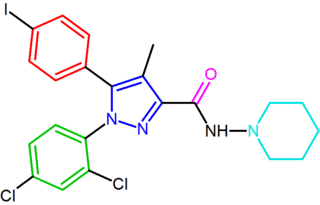
Cannabinoids can be made inside our bodies naturally and are called endocannabinoids. These include anandamide and 2-arachidonyl glycerol (2-AG). Cannabinoids can also be found in plants, called phytocannabinoids. The most common ones come from the cannabis sativa plant including: delta-9-tetrahydrocannabidiol (THC), cannabidiol (CBD) and cannabinol (CBN).
There are even several pharmaceutical forms of cannabinoids including: Sativex, Marinol, and Cesamet. (2) As you can see, there are different cannabinoids, found inside or outside the body, that can act on the cannabinoid receptors.
How Does The ECS Impact The Gut?
IBS is a functional digestive disorder that has a complex pathophysiology. Beyond the obvious digestive symptoms of gas, bloating, abdominal pain, diarrhea, and constipation lurks the altered gut motility, visceral hypersensitivity and mood disturbances.
According to DiPatrizio (2016), “evidence suggests that dysregulation of the endocannabinoid system might play a role in intestinal disorders, including inflammatory bowel disease (IBD), irritable bowel syndrome, as well as obesity” (3). This is an interesting theory and one that we wait anxiously for researchers to explore and confirm for us.
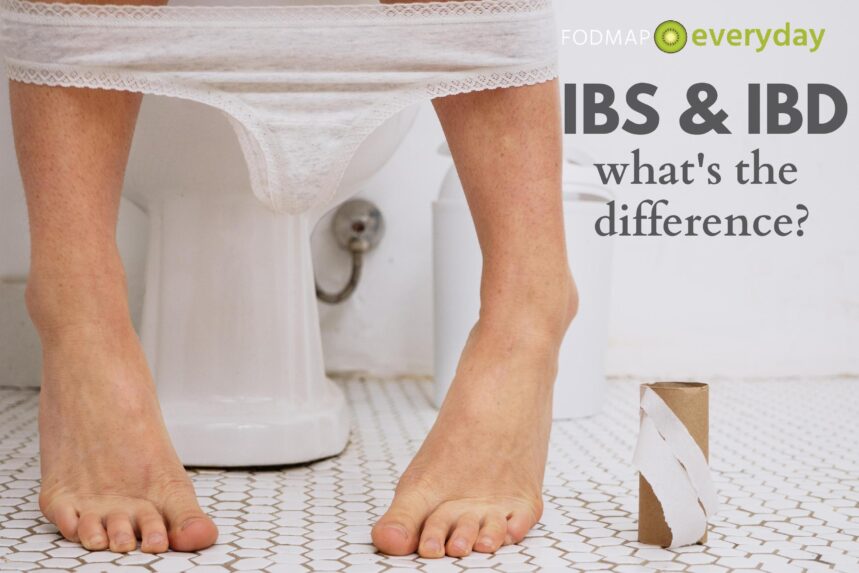
You may want to read: IBS & IBD – What’s the Difference?
We do know that cannabinoid receptors are found throughout the body. CB1 is found primarily in the brain and CB2 in the immune cells, with the majority found in the digestive system. CB1 receptors are primarily associated with memory processing, appetite, pain sensation, mood, and sleep, while CB2 receptors are involved with inflammation and pain. (4)
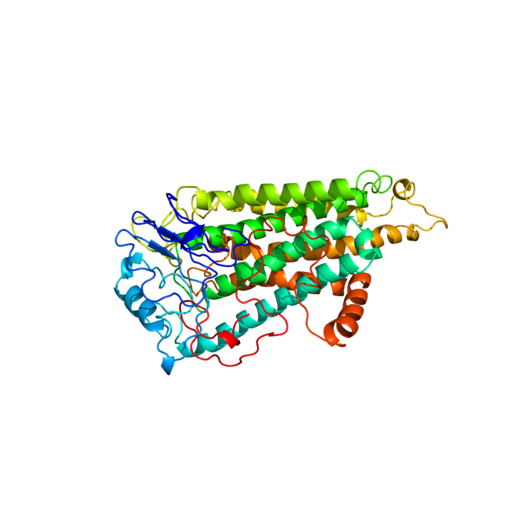
It is believed that by targeting the ECS, we may be able to treat different diseases and conditions. So far, much of the research has been focused on using CBD with seizures, schizophrenia, anxiety, insomnia, and even osteoarthritis in dogs! (5)
While we don’t have solid evidence yet for IBS, using products containing cannabidiol (CBD) or synthetic cannabinoids may help the endocannabinoid system maintain better balance. It’s comforting to know that CBD has a solid safety profile and has been tested in studies at doses as high as 1,500 mg per day without side effects. (6)
The Takeaway
Although my experiences thus far have been very positive, I wouldn’t recommend rushing out and buying CBD hemp oil without the guidance of a CBD literate healthcare practitioner.
The first step in starting the process of using CBD is to determine whether it’s legal in your state or country. There are still a couple of states in the US, including Idaho, South Dakota, and Nebraska, that do not allow the use or purchase of CBD or hemp oils. In all other states, CBD products are legal, but there may be different specifics to each state’s law.
Always check with your particular state laws before using any CBD products. Another consideration is that once you begin using CBD, you may have a false positive test for marijuana on a drug screening even with only trace amounts of THC in products. (7)
It is essential if you are taking medications first to discuss adding CBD with your physician. Certain medications and CBD share the same pathway in the liver for metabolism. Thus, the oral administration of CBD can either increase or decrease the breakdown of medications, altering the medications’ effectiveness. (8)
You can take a closer look at the medications that might interact with CBD at Medline Plus. If your physician is not yet comfortable working with you while incorporating CBD, pharmacists can also be an invaluable resource. This is an exciting new area to watch as the science and research evolves as a potential new adjunctive therapy for digestive disorders such as IBS and IBD.
It’s also important if you are taking medications to first discuss adding CBD with your physician. This is an exciting new area to watch as the science and research evolves as a potential new adjunctive therapy for digestive disorders such as IBS and IBD.
General CBD Dosing Guidelines
Finding the right dosage of CBD can be tricky, even for health professionals. Several factors play a role in dosing CBD, including the condition being treated, a person’s weight, a person’s sensitivity to CBD, metabolism, genetics, pharmaceuticals, diet, and the current state of the endocannabinoid system (10). When starting to use a CBD product, the general recommendation is to introduce it slowly into the body by using a low dosage range and adjusting upward over time until the desired effect is reached (10).
Different online dosage calculators are a reasonable way for people to determine a safe dose for CBD and avoid adverse effects, such as https://www.mydosage.com (9).
This information is provided ‘as is’ for general information only and is subject to our Terms of Use. It is not intended to provide medical advice, and should not be relied upon as a substitute for consultations with qualified health professionals who are familiar with your individual medical needs.
Editor’s Note: This article represents the experience and expertise of the author. At FODMAP Everyday® contributors are chosen for their unique voices, expertise and their credentials if they are sharing medically based information. Our goal is to educate you, the consumer, so that you can make informed decisions about your own health care.
Cooking with CBD
We have created some delicious ways to take your CBD! But first a little guidance:
Using CBD Hemp Oil in Low FODMAP Recipes
And then jump in and enjoy these treats!
Low FODMAP CBD Oil Pizza with Sausage & Fresh Tomato
Low FODMAP CBD Oil Salted Caramel Sauce
Low FODMAP CBD Hot Fudge Sauce
Where to Buy Quality CBD Oil
CBD is not considered a dietary supplement and is not a regulated product; therefore, it is essential to use the following criteria for buying a quality CBD product (7). There have been numerous issues with online product labeling, and inferior products are being sold.
- Look for quality standards:
- Current Good Manufacturing Practices (CGMP) certification from the US Food and Drug administration
- European Union (EU), Australian (AUS), or Canadian (CFIA) organic certification
- National Science Foundation (NSF) International Certification
- Look for organic products that are certified by the USDA as organic
- Look for products that are extracted by using carbon dioxide and not with the use of solvents.
- Companies should be utilizing third-party testing to confirm that the THC level of products is <0.3%, and there are no pesticides, herbicides, or heavy metals present in the products and sharing those test results with customers.
- Be sure the product contains CBD and is not just hemp oil.
We have chosen these Hemp CBD sellers based on the following: the product is full spectrum and made from the whole plant, they can provide third party test results of potency and prove they are clean from chemicals/pesticides, most are organically grown and preferably non-GMO.
We are also affiliates to these sellers – meaning we make a small amount of money if you purchase some product using our link. The price to you is the same. See our full disclosure here.
Elixinol
Medterra
Charlotte’s Web
GLOSSARY
Endocannabinoid System (ECS): Communication system within the brain comprising identified cannabinoid receptors, the endocannabinoids that target the receptors, and the downstream effects
Endocannabinoid: Chemicals produced by the body that target cannabinoid receptors
Cannabinoid: Term used to refer to molecules that are found in the cannabis plant and/or that interact with cannabinoid receptors, as well as the derivatives, and transformation products of those molecules. They can be classified as phytocannabinoids, endocannabinoids, or synthetic cannabinoids.
Hemp: Strains of Cannabis sativa L. historically grown for fibrous materials found in stalks and seeds; contain minimal amounts of THC and low levels of CBD. Used industrially to develop items, such as clothing fiber. The flowering portions of the hemp variety may be used to extract CBD.
CBD oil: An extract obtained from the flowering portions of the hemp plant, then dissolved in another oil (coconut, sesame, etc). It typically contains no THC and has no psychoactive properties.
References
- Storr, M. A., B. Yüce, C. N. Andrews, and K. A. Sharkey. “The Role of the Endocannabinoid System in the Pathophysiology and Treatment of Irritable Bowel Syndrome.” Neurogastroenterology & Motility 20, no. 8 (August 1, 2008): 857–68. https://doi.org/10.1111/j.1365-2982.2008.01175.x.
- “Endocannabinoids: Overview, History, Chemical Structure,” January 26, 2018. https://emedicine.medscape.com/article/1361971-overview.
- DiPatrizio, Nicholas V. “Endocannabinoids in the Gut.” Cannabis and Cannabinoid Research 1, no. 1 (February 1, 2016): 67–77. https://doi.org/10.1089/can.2016.0001.
- “A Look at the Endocannabinoid System’s CB1 and CB2 Receptors.” ECHO Connection (blog), April 18, 2017. https://echoconnection.org/look-endocannabinoid-systems-cb1-cb2-receptors/.
- “CBD & Hemp Supplement Reviews.” ConsumerLab.com. Accessed September 12, 2018. https://www.consumerlab.com/reviews/cbd-oil-hemp-review/cbd-oil/.
- Iffland, Kerstin, and Franjo Grotenhermen. “An Update on Safety and Side Effects of Cannabidiol: A Review of Clinical Data and Relevant Animal Studies.” Cannabis and Cannabinoid Research 2, no. 1 (June 1, 2017): 139–54. https://doi.org/10.1089/can.2016.0034.
- VanDolah, Harrison J., Brent A. Bauer, and Karen F. Mauck. “Clinicians’ Guide to Cannabidiol and Hemp Oils.” Mayo Clinic Proceedings 94, no. 9 (September 1, 2019): 1840–51. https://doi.org/10.1016/j.mayocp.2019.01.003.
- Cather, Jennifer Clay, and J. Christian Cather. “Cannabidiol Primer for Healthcare Professionals.” Proceedings (Baylor University. Medical Center) 33, no. 3 (July 6, 2020): 376–79. https://doi.org/10.1080/08998280.2020.1775437.
- Larsen, Christian, and Jorida Shahinas. “Dosage, Efficacy and Safety of Cannabidiol Administration in Adults: A Systematic Review of Human Trials.” Journal of Clinical Medicine Research 12, no. 3 (March 2020): 129–41. https://doi.org/10.14740/jocmr4090.
- Leinow, Leonard, Juliana Birnbaum, and Michael H. Moskowitz. CBD: A Patient’s Guide to Medicinal Cannabis. Berkeley, CA: North Atlantic Books, 2017.
- “2017 Glossary of Cannabinoid Terms.” Epilepsy Foundation. Accessed September 12, 2018. https://www.epilepsy.com/learn/treating-seizures-and-epilepsy/other-treatment-approaches/medical-marijuana-and-epilepsy/glossary.








Hi Diane,
Thank you for your comment and I’m so happy to hear that you have found relief by following a low FODMAP diet! As for your question about tolerance, there really isn’t much research that I’m aware of in this area. Cannabis products that contain THC may cause tolerance issues, but taking a break from using them for at least 48 hours is usually enough to help with a better response. The maximum amount of THC permitted in CBD hemp products is 0.3%, which is really only a trace amount and many products are completely free of THC (which I recommend). One of the challenges with using CBD hemp products is dosing and at this point, there is no research documenting any sort of tolerance issue with CBD. Some people may need much higher doses of CBD to get the desired effect and others not so much. There is some research showing that increasing intake of omega 3 fatty acids can also have a positive effect on the endocannabinoid system, so perhaps looking to add some foods containing those healthy fats may help to reduce your dose and improve response from either cannabis or CBD hemp products.
I hope this helps as you work towards building a healthy gut!
Best,
Jody
The author mentions that they no longer have symptoms of IBS since they use CBD every day. Is this in conjunction with their modified FODMAP lifestyle? Or, did they stop following a modified diet?
Hi Jules,
This is an excellent question! One of my triggers, as many others also experience, is stress. I am a hypersensitive person and stress often triggered IBS symptoms. For me, CBD worked better to resolve this issue than some of the other strategies I had tried including acupuncture, yoga, etc. Everyone is different and what works well for one person may differ for someone else. Once I found my optimal dose of CBD and had the visceral hypersensitivity under control, I found that I needed less dietary restrictions. So, basically, the only modification I need now is a gluten-free diet, but this is due to gluten sensitivity (joint pain, brain fog, fatigue, etc.) and not because of a FODMAP issue While I was first using CBD, I did have to follow a modified low FODMAP diet and watch more carefully, but over time I no longer had to do that.
I hope this helps clarify things a bit more.
Best,
Jody
I have both Sibo and now LPR. Do you think CBD oil will help with both these issues? I actually was managing my Sibo fine after taking a antibiotic two years ago with peppermints and watching what I ate but then they put me on a PPI..omerprazole and then the SIBO came back. I am taking CBD oil from Manitoba Harvest Valley but I do not think it is helping. Would it be a good suggestion to try different brands to see if one works better than the other?
Hi Joanna,
Thank you for your question about using CBD to help with your digestive conditions. First of all, I would highly recommend that you work with a qualified health professional to help manage your digestive conditions. This can make such a huge difference in your progress. As for CBD brands, I believe there are so many high-quality products available and again, working with a health professional can be helpful in figuring out the correct dose for you. Often times it’s not the product itself that is the problem, it’s finding the right dosing protocol to get the intended relief from symptoms. This is highly individualized, so you may want to keep trying. CBD does take some time to work and especially with digestive conditions. I hope this helps, and I wish you well on your journey to digestive health!
Great Article! The benefits of CBD oils you have mentioned in this article is really impressive. Thanks for sharing valuable information!
I would love to get in contact with a specialist for a consult for use of CBD for IBS. Who would I contact?
Reach out to Jody herself as a start! https://jodygarlick.com
Hello! Thank you for talking about such an important topic, it was very informative. I believe that such information needs to be disseminated as much as possible, because indeed, many do not even know about such a wonderful drug as CBD. I want to share my story, I was diagnosed with functional indigestion 4 years ago, and I fought with this disease for more than 3 years, but almost nothing helped me. I very quickly got used to the prescribed medicines and my condition worsened again. When I first heard about CBD, I didn’t even believe in its properties. But a year ago I got desperate and decided to try CBD, I did not regret it. Now my digestion is normal.
We love hearing success stories. Thank you for sharing.
CBD is an underrated alternative medicine. This article opened my eyes to so many things, including the fact that we only discovered the endocannabinoid system just 20 years ago. It is crazy to this that we have come this far with what we know and there’s so much we don’t know yet.
I’m glad that CBD worked out so well for your son.
I started out with CBD oil and didn’t have much luck with my IBS-C. Then I bought some CBD flower and smoked it. That helped me so much and I’m no longer suffering with my symptoms. Now I make “medibles” with the CBD flower. Things are much better! I’m very happy I finally found a solution.
It is all so individual. So great you found what works for you.
I use it for indigestion, lowering high triglycerides, constipation, hip pain, sciatica, piliforim pain, IBS and diverticulitis. Up to the start of using CBD I was on Severdol, Tramadol, Diclofenac, Panadol and very sick and asleep most of the time. I could not walk or drive and now l am almost pain- free and living a normal life, eating foods l have intolerances to. I have suffered for 30years and now CBD is giving me my life back. It has also helped to improve my eyesight. Maybe it will become the magic panacea for a longerlife. It certainly is an amazing cure.
I’ve been taking CBD oil every evening. I take 30 mg. I feel that it calms me down. I am able to fall asleep and stay asleep. It has truly worked wonders for me.
I use CBD hemp oil to normalize my condition. Twice a day for 20 mg and I feel relaxed.
Can you tell us which product and amount you use that worked great for you? Thank you!
The products are listed right at the end of the article, with images.